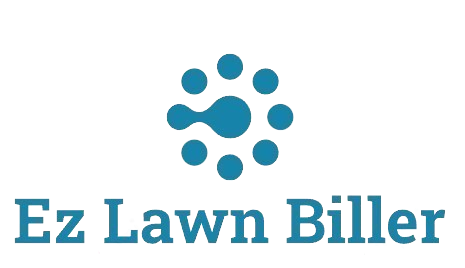How to Optimize Routes for Your Lawn Care Business
Optimizing routes for a lawn care business is essential for maximizing efficiency, reducing fuel costs, and improving customer satisfaction. In this comprehensive guide, we will explore the best practices and tools available to help lawn care companies streamline their operations. From leveraging technology to understanding your customer base, this post will equip you with the knowledge necessary to enhance your routing strategies.
In the competitive world of lawn care, every minute counts. Inefficient routing can lead to wasted time, increased operational costs, and dissatisfied customers. Therefore, as a lawn care business owner, it is crucial to implement effective routing strategies that not only save time but also improve overall service delivery. In this article, we’ll delve into various methods to optimize your routes, including the use of advanced software, real-time data analytics, and strategic planning.
We will also discuss the importance of understanding your geographical area and customer needs, as well as how tools like lawn billing software can play a significant role in your routing efficiency. By the end of this post, you will have a well-rounded understanding of how to optimize your routes effectively.
Understanding the Importance of Route Optimization
Route optimization is the process of determining the most efficient path for your lawn care services. This not only leads to time and fuel savings but also allows you to serve more clients in a single day. According to a study by the U.S. Department of Energy, optimizing delivery routes can reduce fuel consumption by up to 30%. This statistic alone highlights the substantial impact that effective routing can have on your bottom line.
Moreover, with the increasing demand for timely lawn care services, clients expect promptness and reliability. By optimizing your routes, you can ensure that you meet these expectations while maintaining high service quality. For instance, if your team can complete more jobs in a day, it increases your overall revenue and enhances customer satisfaction.
Utilizing Lawn Service Software for Route Planning
Modern technology has made route optimization easier than ever. Lawn service software, such as EZ Lawn Biller, provides tools that allow you to plan and adjust your routes efficiently. With features like automated scheduling and service tracking, businesses can optimize their workflows to save time and resources.
For example, EZ Lawn Biller allows you to input client addresses and schedule your services based on proximity to one another. This type of software can automatically generate the most efficient routes for your team, minimizing travel time between jobs. Additionally, you can easily adapt to last-minute changes, such as new customers or cancellations, ensuring continuous optimization of your daily schedule.
Incorporating GPS and Real-Time Data
Implementing GPS technology and real-time data tracking can significantly enhance your route optimization efforts. Real-time data helps lawn care businesses stay on top of traffic conditions, weather changes, and road closures. By utilizing GPS-enabled devices or applications, your team can receive live updates, allowing them to adjust their routes as necessary.
For instance, if a crew is en route to a client’s property and encounters heavy traffic, they can quickly receive an alternative route suggestion. This flexibility not only saves time but also reduces frustration for both the crew and the client. Additionally, by keeping track of service times for each stop, you can refine your routes over time based on historical data, continually improving efficiency.
Understanding Your Geographic Area and Customer Needs
To optimize routing effectively, it is vital to have a deep understanding of the geographic area you serve. Factors such as regional traffic patterns, popular neighborhoods, and the density of clients can greatly influence your route planning. Spending time researching these elements can lead to improved scheduling and fewer wasted trips.
Furthermore, understanding your customer’s needs is essential. Different clients may have varying preferences regarding service times and days. By gathering this information, you can design your routes to accommodate client requests while maximizing efficiency. For example, if you know that a group of clients prefers services early in the morning, you can schedule those jobs first, allowing for a smoother workflow throughout the day.
Best Practices for Route Optimization
In addition to utilizing technology and understanding customer needs, there are several best practices that lawn care businesses should adopt for effective route optimization. First, always plan ahead. By mapping out routes for the week or month, you can ensure that crews have a clear understanding of their schedules and locations.
Next, keep communication open between team members. Regular check-ins can help crews adapt to any changes that arise, ensuring that everyone remains on the same page. Additionally, consider using a lawn service app to allow crews to communicate their statuses in real-time, providing visibility into daily operations.
Another best practice is to regularly review and analyze your routing performance. This could involve looking at time taken per job, fuel consumption, or customer satisfaction ratings. By identifying patterns and areas for improvement, you can refine your strategies and enhance overall productivity.
Leveraging Customer Feedback for Continuous Improvement
Your clients are a valuable source of information that can aid in optimizing your routes. Actively seeking feedback on service times and satisfaction can provide insights into how well your routing strategies are working. Consider implementing a simple survey after each service to gather this information.
Utilizing feedback not only helps you improve your routing but also enhances customer loyalty. When clients see that you are responsive to their needs and willing to adapt your services, they are more likely to remain with your business long-term. Make it a point to act on constructive criticism and celebrate successes, which will encourage further engagement and trust from your clients.
Implementing Recurring Billing for Increased Efficiency
Having a reliable billing process can also contribute to route optimization. By implementing a system for recurring billing through software like EZ Lawn Biller, you can streamline payment processes and reduce administrative tasks. This allows your team to focus on service delivery rather than paperwork.
Recurring billing also provides predictability in your scheduling. Knowing when clients are scheduled for service enables better planning around your routes. For example, if you have a client who wants weekly mowing on Thursdays, you can group their service with nearby clients, maximizing efficiency during your weekly rounds.
Training Your Team on Route Efficiency
Your team plays a crucial role in route optimization. Therefore, training is essential to ensure that all team members understand how to follow the planned routes effectively. Provide them with the necessary tools and knowledge to utilize GPS devices and software to their full potential.
Ongoing training sessions can help reinforce your goals around efficiency. By emphasizing the importance of following optimized routes, you can cultivate a culture of accountability and ensure that everyone is working toward the same objectives. Additionally, consider recognizing team members who consistently follow optimized routes and contribute to overall efficiency.
Evaluating Your Progress and Making Adjustments
As with any business strategy, continuous evaluation is key to success. Regularly assess the effectiveness of your routing strategies by analyzing performance metrics such as fuel usage, service times, and customer feedback. With tools like report generation from your lawn service software, you can gain insights that allow you to make informed adjustments.
If you notice that certain routes consistently take longer or result in customer complaints, it may be time to reassess and redesign those routes. Flexibility is crucial in route optimization; the ability to adapt to changes in your client base or geographic area can lead to sustained efficiency improvements over time.
Conclusion
Optimizing routes for your lawn care business is not just a matter of convenience; it is a strategic necessity that can lead to significant improvements in efficiency, customer satisfaction, and profitability. By leveraging lawn service software, real-time data, and an in-depth understanding of your clients and geographic area, you can create a routing system that works effectively for your business.
Through the implementation of best practices, ongoing team training, and a commitment to continuous evaluation, you can refine your routing strategies to maximize effectiveness. In doing so, you will not only enhance your operational efficiency but also build stronger relationships with your clients, paving the way for future success.
Ready to take your lawn care business to the next level? Consider using a comprehensive solution like [Lawn Biller Software](https://ezlawnbiller.com/) that streamlines billing and service management, allowing you to focus on what you do best—providing exceptional lawn care services.




